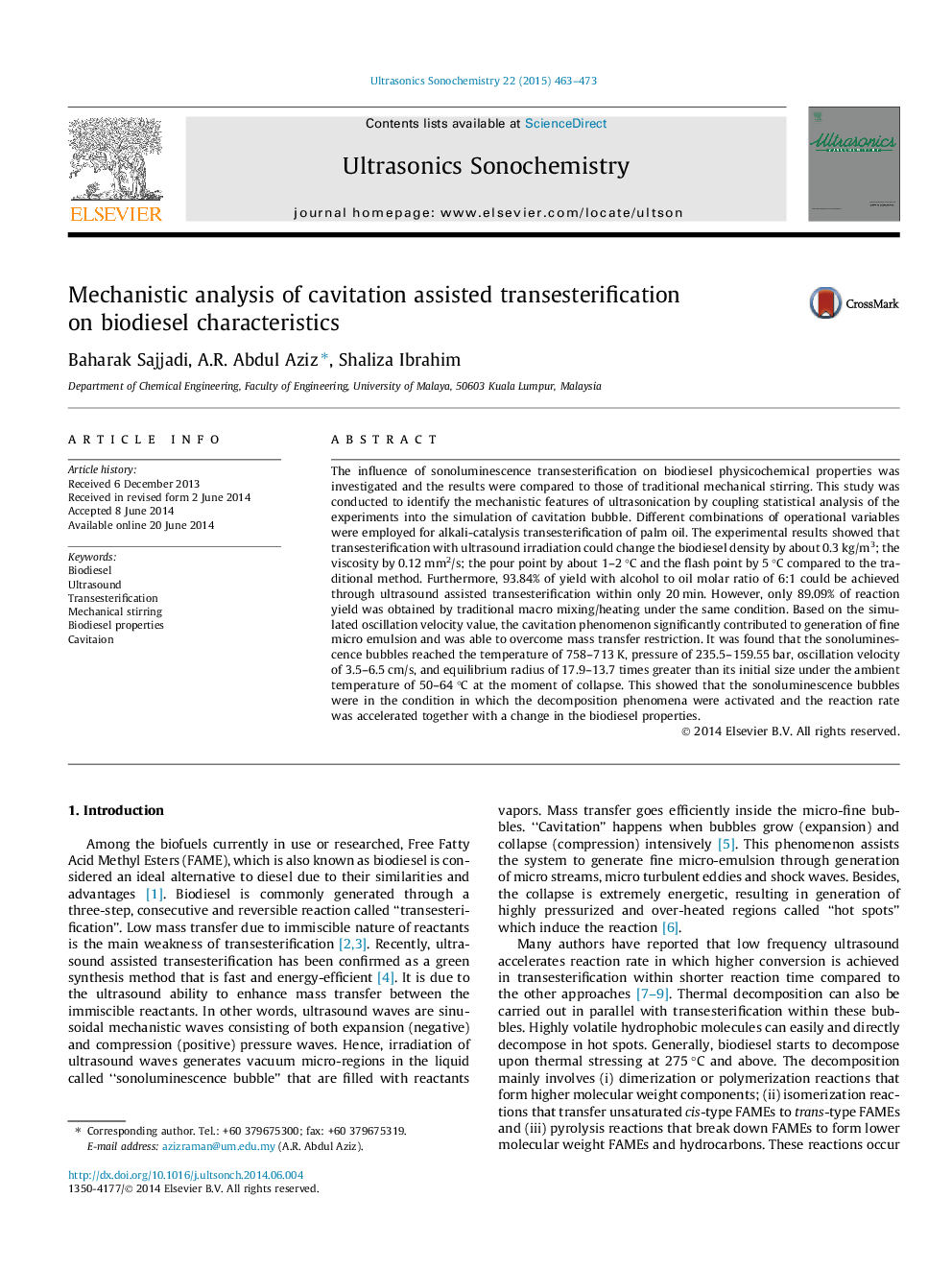| Article ID | Journal | Published Year | Pages | File Type |
|---|---|---|---|---|
| 1269670 | Ultrasonics Sonochemistry | 2015 | 11 Pages |
The influence of sonoluminescence transesterification on biodiesel physicochemical properties was investigated and the results were compared to those of traditional mechanical stirring. This study was conducted to identify the mechanistic features of ultrasonication by coupling statistical analysis of the experiments into the simulation of cavitation bubble. Different combinations of operational variables were employed for alkali-catalysis transesterification of palm oil. The experimental results showed that transesterification with ultrasound irradiation could change the biodiesel density by about 0.3 kg/m3; the viscosity by 0.12 mm2/s; the pour point by about 1–2 °C and the flash point by 5 °C compared to the traditional method. Furthermore, 93.84% of yield with alcohol to oil molar ratio of 6:1 could be achieved through ultrasound assisted transesterification within only 20 min. However, only 89.09% of reaction yield was obtained by traditional macro mixing/heating under the same condition. Based on the simulated oscillation velocity value, the cavitation phenomenon significantly contributed to generation of fine micro emulsion and was able to overcome mass transfer restriction. It was found that the sonoluminescence bubbles reached the temperature of 758–713 K, pressure of 235.5–159.55 bar, oscillation velocity of 3.5–6.5 cm/s, and equilibrium radius of 17.9–13.7 times greater than its initial size under the ambient temperature of 50–64 °C at the moment of collapse. This showed that the sonoluminescence bubbles were in the condition in which the decomposition phenomena were activated and the reaction rate was accelerated together with a change in the biodiesel properties.
